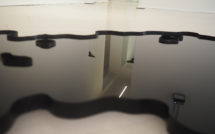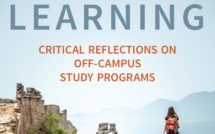

An Introduction to our special feature on European Art, Culture, and Politics.
As I write this, much of our world has changed. COVID-19 has impacted the way we move, how we feel, and what we think. We hope that it is temporary, quickly over, even as the time sheltering in place stretches out. This collection of essays on arts, politics, and culture developed before the current condition and the final editing of the papers came at a time when all the contributors faced personal and professional challenges. For their wonderful collaboration, I am deeply grateful. And it is this kind of coming together that offers a sense of hope in the midst of the pandemic.
Throughout Europe, the headlines today announce a new financial aid package that indicates a renewed level of cooperation on the part of the EU member states. In Germany, the news this morning included statements by leading politicians describing that party politics have no place, and all are working together for the sake of the populace. For that news, I am deeply grateful as well. Just a few months ago, discussions of Brexit, Euro-skeptical populists, and desperate migrant populations at the southern borders dominated the headlines. As the crisis mounted, these discussions faded. News of those falling ill in Italy, then Spain and France, Germany and the Netherlands, brought with it new discussions of failing solidarity and North South divides. Anxious prognostications of the demise of Europe began to emerge again in the background of the news reporting. The financial package might not resolve all these conflicts and shift the pessimism to optimism. The news that the populist AFD party in Germany is on the decline might not herald a larger political shift throughout Europe. Indeed, it offers evidence that the European project is one that I have come to describe as dis/union—a dynamic of push-pull factors that remain constant. Precisely because there is a European project, the dynamic of union and disunion, contentious skepticism and optimism, pro and contra, which are part of all polities, obtains within the EU and at the broader European level. At the same time, the news that the numbers of infected and dying are beginning to decline certainly provides a sense of future with hope.
In the current conditions, it pleases me to say that the essays here, which do not discuss the pandemic, nevertheless offer insights that address the situation of European dis/union. Considering various aspects of European arts, politics, and culture, the essays provide interventions in the current imaginings of the European project and its history. Divided into four sections, the first section Imagining Europe, considers the literary and moving image projects that imagine European community. Anke Biendarra considers “Cosmopolitanism and Hospitality in European Refugee Narratives.” Christine Ivanovic provides an immediate companion with her discussion of “Postmigrational Writing: The Next Generation.” Estela Schindel continues the discussion attending to the moving image with her contribution: “Border Matters: Death, Mourning and Materiality at the European Borderlands.” These essays offer a broad survey of some of the best recent European literature and films considering the possibilities of community and the definitions of belonging current in Europe. Susann Worschech and Zsuzsanna Magdo continue this analysis but move the attention to the East, the Ukraine and Hungary. Worschech in her essay “attends to the current conflict cutting across the Ukraine, and the geopolitical rift between the EU and Eurasia, NATO states and Russia. Magdo in her essay, “Ferenc Balázs, Transylvanism and Global Utopia, 1923-1937,” reminds us of other real possibilities in the organization of Europe that emerged in the post-imperial period after WWI. She reminds us as well of the importance of utopian hope in political and cultural organization.
Section Two contains three interconnected contributions by Karen Remmler, Renata Schellenberg, and Emi Finkelstein, considering Practices of Remembering and Commemorating. These essays identify broad post-colonial dynamics in Europe. Karen Remmler’s discussion “The Afterlives of Refugee Dead: What Remains?” maintains a connection to Section One, considering the plight of the people who lost their lives trying to cross into the Schengen zone. She reviews various projects that seek to commemorate the deceased. Schellenberg and Finkelstein extend this analysis to consider how specific legacies of German colonialism inflect the present. In “Reparations and Remembrance: Determining the Future of German-Namibian Relations,” Schellenberg addresses the general European position vis-à-vis the atrocities and genocides of the colonial past: deny, downgrade, delay. She shows a slow transformation in the acknowledgement of the Herero Nama Wars by the German state and how this plays out in the international German-Namibian cultural exchange. Finkelstein attends to the broader European reworking of the colonial legacies of the Ethnographic museums, while looking specifically at the problems associated with the Humboldt Forum being built in the heart of Berlin.
Section Three, Culture and Political Science, contains two essays by Timm Beichelt and myself. As a Humanist engaged in European Studies, I have had important and productive conversations with Timm Beichelt, a Political Scientist who addresses questions of European culture. The two essays here represent attempts to bring our dialog forward into work explicitly on the culture and politics of the European project. The academic and even disciplinary tone of these two essays arises out of the aspiration to foster inter-disciplinary discussions. Timm Beichelt offers “A Culturalist Perspective on Populism In Europe,” and in doing so, seeks to address larger problems for Political Scientists of assessing culture as a multi-factoral and non-normative dynamic. I ask Humanists to consider in turn the possibility of a European Cultural Integration Theory that parallels the elaborate work done in the Social Sciences. As antidote, however, to social scientific dismissal of the role of culture in the European project, I review positions taken by the foundational figures of post-war European unification and offer a revision of historical developments for further research.
Finally, the special issue ends with a first translation by Kristin Dickinson of selections from Ahmet Haşim’s Frankfurt Travelogue. The Turkish Modernist poet Haşim travelled to Germany in 1932, arriving in the moment of the rise of Hitler to power and the beginning of the German, European and global catastrophe to follow. Haşim reported on his experiences at a time of crisis, populism, radical political transformation, while contending with his own illness and treatment. The insights of that moment into the past offer us strong insights into our moment in the present. The translation offers a first reading for non-Turkish speakers of the observations of this important European poet.
Research
Imagining Europe
– “Cosmopolitanism and Hospitality in European Refugee Narratives” by Anke S. Biendarra
– “Postmigrational Writing: The Next Generation” by Christine Ivanovic
– “Border Matters: Death, Mourning and Materiality at the European Borderlands” by Estela Schindel
– “Ferenc Balázs, Transylvanism, and Global Utopia, 1923-1937” by Zsuzsánna Magdó
Practices of Remembering and Commemorating
– “The Afterlives of Refugee Dead: What Remains?” by Karen Remmler
– “Colonial Histories at the Humboldt Forum” by Emi Finkelstein
Culture and Political Science
– “Culturalist Perspectives in Social Analysis on Europe” by Timm Beichelt
– “Toward a European (Cultural) Integration Theory” by Randall Halle
Commentary
– “Reading Ahmet Haşim’s Frankfurt Travelogue in the 21st Century” by Kristin Dickinson
Book Review
– Framing the Church: The Social and Artistic Power of Buttresses in French Gothic Architecture, reviewed by Caroline Bruzelius
Visual Art
– “Game Over” by Maria Wasilewska
Literary Nonfiction
Randall Halle is the Klaus W. Jonas Professor of German Film and Cultural Studies at the University of Pittsburgh. He directs the Film and Media Studies Program, as well as the Critical European Culture Studies Program. His books include The Europeanization of Cinema, German Film after Germany, and Queer Readings in Social Philosophy.
Photo: Unity and teamwork | Shutterstock
Published on April 28, 2020.




